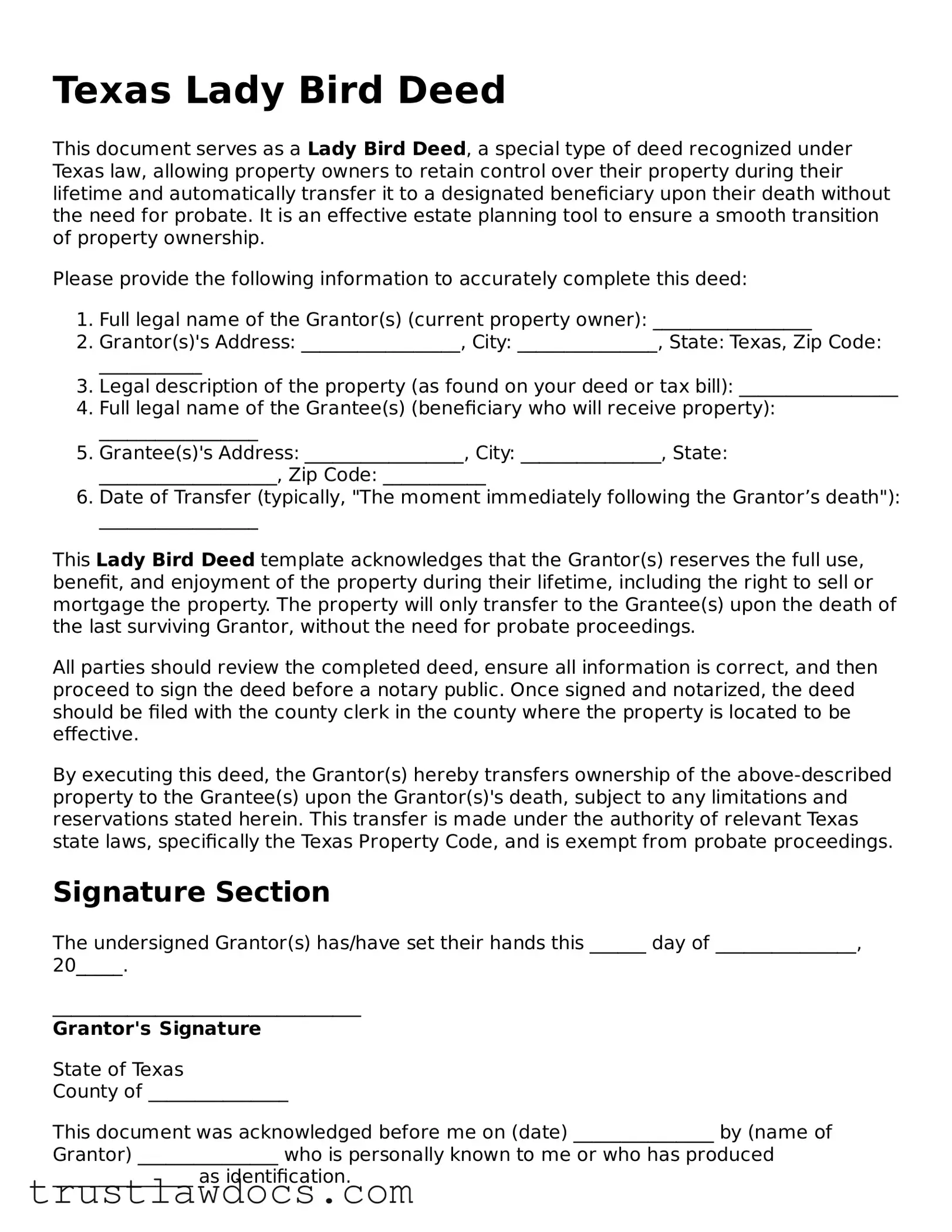Texas Lady Bird Deed
This document serves as a Lady Bird Deed, a special type of deed recognized under Texas law, allowing property owners to retain control over their property during their lifetime and automatically transfer it to a designated beneficiary upon their death without the need for probate. It is an effective estate planning tool to ensure a smooth transition of property ownership.
Please provide the following information to accurately complete this deed:
- Full legal name of the Grantor(s) (current property owner): _________________
- Grantor(s)'s Address: _________________, City: _______________, State: Texas, Zip Code: ___________
- Legal description of the property (as found on your deed or tax bill): _________________
- Full legal name of the Grantee(s) (beneficiary who will receive property): _________________
- Grantee(s)'s Address: _________________, City: _______________, State: ___________________, Zip Code: ___________
- Date of Transfer (typically, "The moment immediately following the Grantor’s death"): _________________
This Lady Bird Deed template acknowledges that the Grantor(s) reserves the full use, benefit, and enjoyment of the property during their lifetime, including the right to sell or mortgage the property. The property will only transfer to the Grantee(s) upon the death of the last surviving Grantor, without the need for probate proceedings.
All parties should review the completed deed, ensure all information is correct, and then proceed to sign the deed before a notary public. Once signed and notarized, the deed should be filed with the county clerk in the county where the property is located to be effective.
By executing this deed, the Grantor(s) hereby transfers ownership of the above-described property to the Grantee(s) upon the Grantor(s)'s death, subject to any limitations and reservations stated herein. This transfer is made under the authority of relevant Texas state laws, specifically the Texas Property Code, and is exempt from probate proceedings.
Signature Section
The undersigned Grantor(s) has/have set their hands this ______ day of _______________, 20_____.
_________________________________
Grantor's Signature
State of Texas
County of _______________
This document was acknowledged before me on (date) _______________ by (name of Grantor) _______________ who is personally known to me or who has produced _______________ as identification.
_________________________________
Notary Public's Signature
My Commission Expires: _______________
After completing this document, ensure to keep a copy for your records and file the original with the appropriate county office. Reviewing this document with a legal professional is highly advised to ensure compliance with Texas law and address any specific circumstances or questions you may have.
